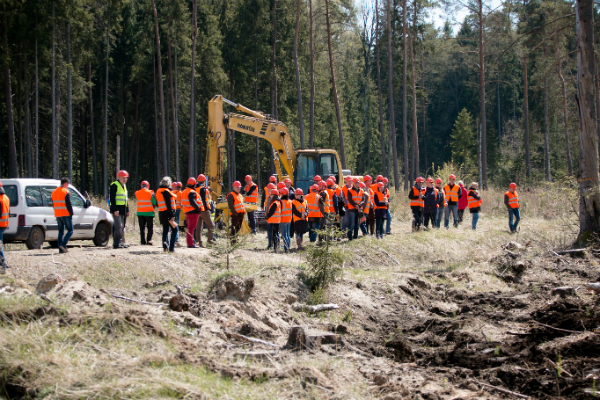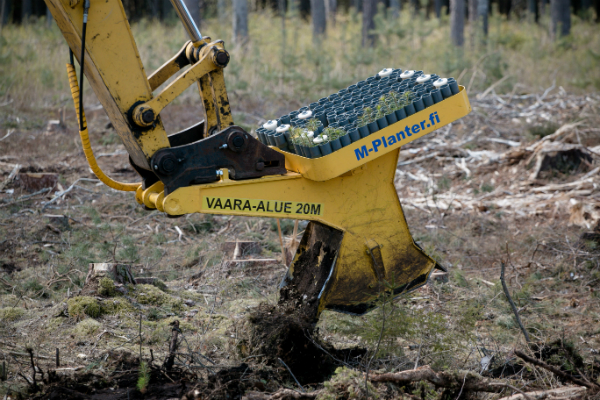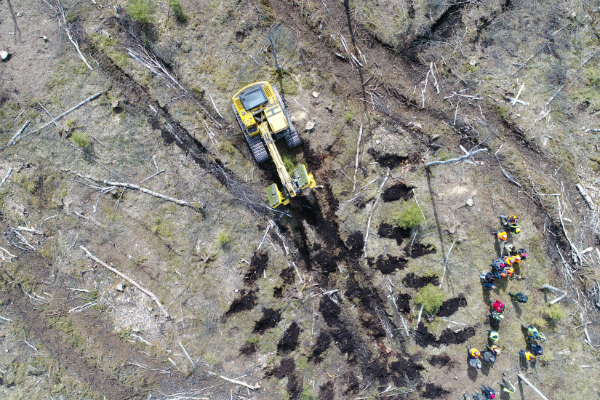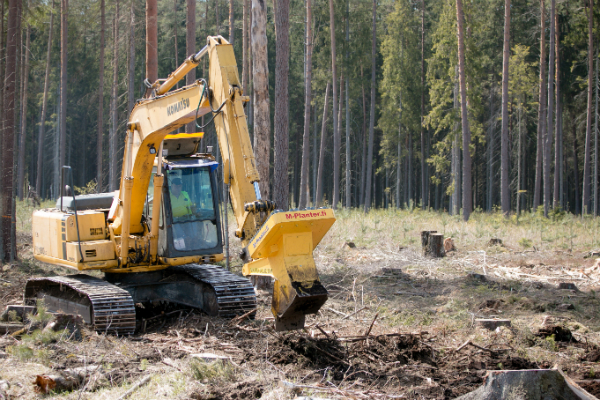How will Forests be Restored in the Future?
With an insight into tomorrow's forest management, in May this year JSC "Latvia's State Forests" (LVM) in collaboration with the Latvian State Forest Research Institute "Silava" and the Nordic Forest Research Institute Cooperation Organization held an international workshop called "Machining of Forest Restoration Works". It was an opportunity to learn about reforestation work practice in Lithuania, Estonia, machinal reforestation experience in Finland and the research carried out so far in Latvia. Participants had a chance to see demonstrations with planting device "M-Planter" carried out in Olaine neighbourhood.
"This kind of outreach activity is a great opportunity to introduce LVM prospective service providers and other industry representatives in Latvia to currently available geographically-wise the closest, most advanced and productive forest planting equipment," says Edmunds Linde, Executive Director LVM Forestry.
The operating principle of the planting device is simple: an excavator using its special planting barrel tears out a piece of soil, turns the uplift around and plants a seedling onto it. 140 seedlings can be placed on one planting head, and it takes only 4-5 minutes. An average of 160 to 300 seedlings an hour can be planted using the double-barrel device, depending on the complexity of the area to be restored.
The innovative planting device combines a "two in one" functionality - it can at once both prepare the soil and perform planting works. If necessary, the planting barrel can be equipped with additional functions for processing of seedlings to perform fertilisation, irrigation or treatment with repellents.
Besides, in machinal work the human factor is reduced to the minimum. Currently a large number of people are involved in forest planting, and their work must be supervised. In turn, the planting device on the excavator is managed by a single operator, so all seedlings are planted in the same way, according to the input parameters, depending on the type of felling.
The main advantage of forest planting machinery is its use in wet forest types where recovery is not possible using the traditional methods - in wet mineral soils and wet peat soils where uplift and surface water drainage is needed.
Edmunds Linde says that this technique, however, cannot be compared with the use of harvesters where one equipment unit replaces 40 lumberjacks. Work productivity is lower, and it mostly focuses on the problem areas as well as areas where container seedlings are to be used for reforestation (machinery currently does not provide for planting using other types of seedlings). In Finland, machinal planting is carried out in 3-4% (approx. 3.6 thsd ha) of the total renewable area using around 20 planting units
Similar machinal planting trials were carried out in Latvia already in 2007; however, the results were not as expected. It is mainly because the equipment from Finland was available only in the autumn, when the planting season was already over. Besides, the small trees planted on the uplift turned out to be particularly attractive to deer; therefore, in the trial plots the new seedlings were more damaged by the ungulates than by the excess moisture. The trials found that flat and compact uplifts in the height of 20 centimetres are the most suitable for the Latvian conditions.
The data obtained in the course of this May's trial of "M-Planter" equipment will allow distinguishing between machinal and traditionally planted seedlings under similar growing conditions, thus understanding the technology costs and place of this service in the Latvian market.
During the seminar, Finnish Natural Resources Institute (LUKE) representative Timo Saksa shared his experience of machining of agro-technical tending, since planting is just one of the stages of forest regeneration. For example, in Finland, one of the devices that is used to perform forest machinal agro-technical tending is "Naarva Uprooter" which, when tending a young stand pulls out herb, undershrub and shrub shoots together with their roots thus giving longer-lasting results.
Although research on the use of such devices continues, now it can be concluded that for Latvia this method is relatively expensive to consider its introduction, since agro-technical tending in Scandinavia, especially in the northern areas, is not required as often as in Latvia.
This workshop and reforestation equipment testing is only part of the activities of the research programme "Reforestation, Afforestation and Tending". In cooperation with the Latvian State Forest Research Institute "Silava", innovative solutions for high-quality and healthy cultivation of stands will be implemented and put into practice by 2020.
Reforestation, afforestation and tending programme study results are annually summarised and published in interim reports that are available on the LVM website section "Pētījumi un publikācijas" (Research and Publications).







